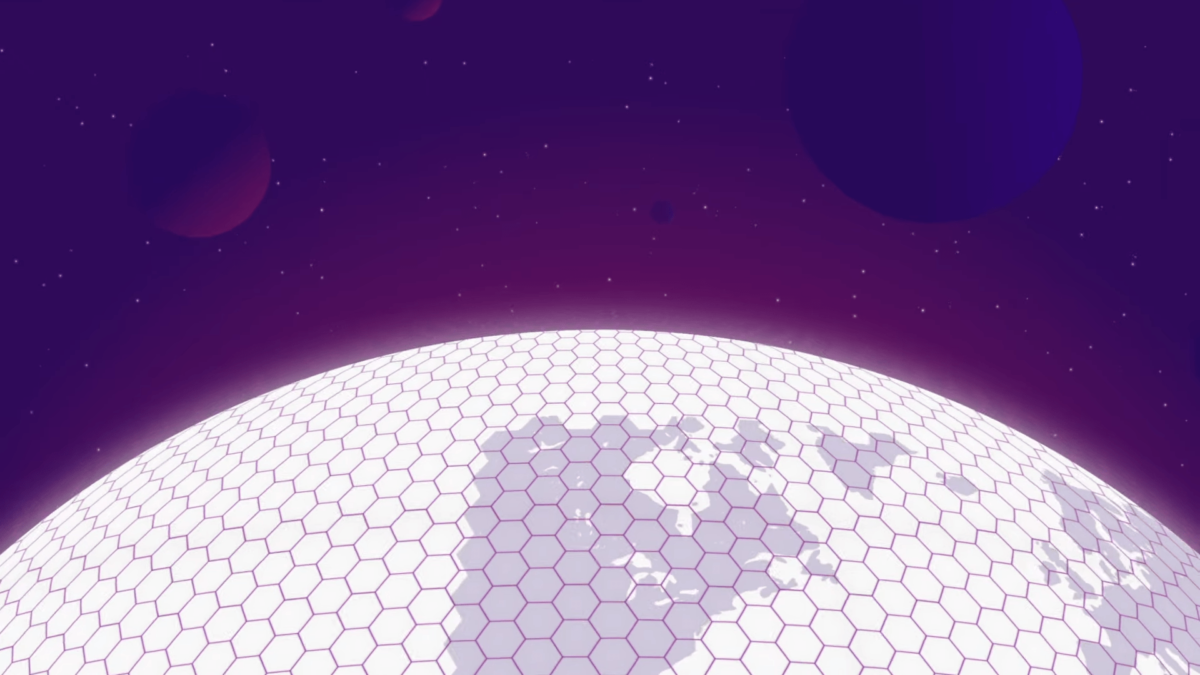OVR wants to merge metaverse and real world

OVR sees itself as an emerging world-scale Metaverse platform that bridges the gap between the virtual and real worlds. The platform relies on augmented reality and the Ethereum blockchain.
OVR aims to bridge the digital-real gap through augmented reality experiences across various smart devices with cameras such as smartphones or VR headsets. As the Metaverse principle expands, OVR aims to expand the digital space for accessibility, ownership and investment opportunities.
OVR is specifically focused on interaction and content creation. For example, users can create 3D content, use it for commerce, and participate in play-to-earn games similar to Pokemon Go. The AR platform wants to promote the attractiveness of its platform with these financially profitable and interactive experiences for users.
OVR: dividing the world into hexagons
OVR is fundamentally a 3D digital plane that divides the real world into 1.6 trillion hexagons. The OVR team decided to use hexagons instead of the usual squares or triangles because they believe this subdivision is more accurate.
It also creates more digital land - which in turn generates more revenue: With OVR tokens, users can purchase and permanently own the corresponding coordinates of a hexagon. Each hexagon is around 300 square meters in size.
Like web domains, the acquired coordinates are uniquely and unmistakably owned by individuals at OVR. Each plot, or OVRLand, is an individual NFT. The startup says it has already been able to auction off more than half a million of the digital plots.
With OVR, you're supposed to integrate, own and monetize your digital dreamland into a real place
OVR's next step is to augment the real world with real-time AR experiences. A scan in a physical location is intended to bring users into a world with a customized AR environment. Virtual real-time events are to take place in real concert halls or shopping malls, for example.
OVR's platform aims to be the connecting element between the real and digital levels. Users interact as realistic-looking avatars, which OVR generates automatically based on the profile picture.
Users and OVRLand owners can also publish and trade 3D content they create using OVR Builder, a 3D editor in the browser. "Buy Bran Castle (Dracula’s Castle) —> turn it into a haunted house —> charge an entrance fee —> boom, passive income!" is how one OVR user describes his strategy.
The play-to-earn principle is intended to promote the willingness of users to participate in the development of the platform. Specifically, OVR offers "Map-to-Earn," in which users go on a treasure hunt and search physical locations for tokens. OVR can use the data to improve its maps.
Diego Di Tomasso, COO and co-founder of OVR, explains that Map-to-Earn, just like the rest of the OVR metaverse, is still in development. Geolocation poses some problems, he said because GPS accuracy is limited.
The OVR app is available in the Android Store and the iOS Store. At the end of January 2022, OVR announced it would switch to polygon, which should reduce transaction costs.
Read more about Augmented Reality:
- TikTok, Instagram, Snapchat - AR filters change self-perception
- Samsung chief confirms Metaverse device
- Meta stops major VR AR project – report
Note: Links to online stores in articles can be so-called affiliate links. If you buy through this link, MIXED receives a commission from the provider. For you the price does not change.